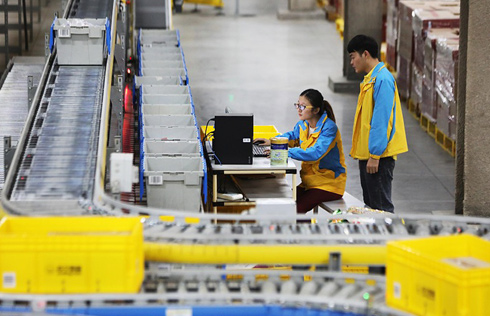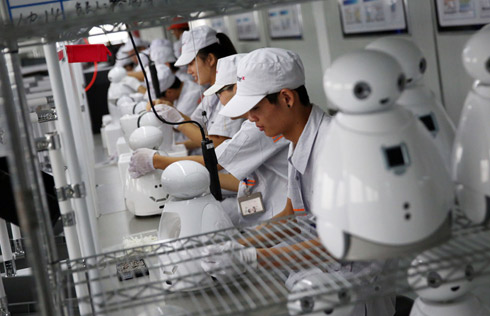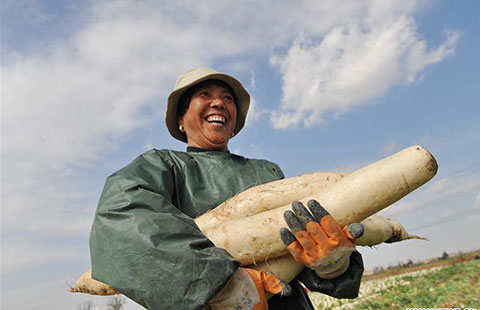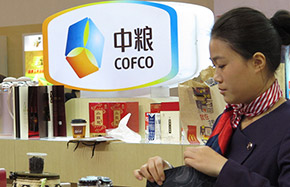Jan-Oct imports jump 21.5%
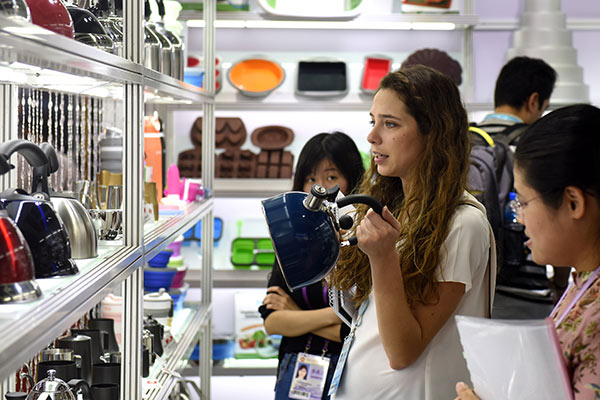 |
|
A visitor purchases kettles at the 122nd Canton Fair, which concluded in Guangzhou on Nov 4.XINHUA |
China's imports jumped 21.5 percent year-on-year to 10.11 trillion yuan ($1.52 trillion) from January through October this year-as domestic demand for bulk commodities, mechanical and electrical products notably surged, the General Administration of Customs announced on Wednesday.
The country in the meantime purchased 896 million metric tons of iron ore, 349 million tons of crude oil and 54.16 million tons of natural gas from global markets, up 6.3 percent, 11.8 percent and 24.9 percent, respectively, year-on-year.
Xu Hongcai, an economist with the China Center for International Economic Exchanges, said the import scene remains promising as the demand for and price of bulk commodities have been rising. It also showed that the recovery in the domestic market remains steady.
Eager to support its ongoing industrial upgrade, China also imported 4.66 trillion yuan of mechanical and electrical products, growing 14.9 percent from the same period a year earlier, including 1.01 million units of vehicles.
China's foreign trade volume rose 15.9 percent year-on-year to 22.52 trillion yuan in the first 10 months of 2017, while exports increased 11.7 percent to 12.41 trillion yuan. The trade surplus shrank 17.8 percent to 2.3 trillion yuan in the same period.
Both the trade volume and the share of private enterprises increased, as their combined volume rose 17.1 percent and accounted for 38.4 percent of the total, larger than the share for the same period of 2016.

"China is no longer betting on exports to drive up the economy, cultivating new growth points via technology upgrades, high-end foreign machinery imports, stimulus measures to boost domestic consumption and adequate investments in fast-growing sectors in global destinations-they have all become indispensable parts for the country to boost its economy," said Feng Yaoxiang, a spokesman for the China Council for the Promotion of International Trade in Beijing.
The country's trade volume with traditional markets, including the European Union, the United States and the Association of Southeast Asian Nations, saw 16.2 percent, 17.2 percent and 18.5 percent year-on-year growth respectively.
Jim Miller, chairman of the US Soybean Export Council, believes that China will continue to increase its agricultural product import from the US.
"As the Chinese economy continues to grow, residential income keeps rising, and China succeeds in its goals for poverty alleviation, China's demand for market-based soybean imports will grow, and US soybean farmers will remain China's steadfast partners," Miller said.
Eager to accelerate the pace of opening-up and boost global trade, China will hold its first international import expo in Shanghai in November next year, and continue to optimize its range of products and approach to the global market through new trade routes and regional cooperation arrangements.
The country has already reached 15 free trade agreements with 23 countries and regions. It has also launched feasibility studies on FTAs with Canada and is willing to conduct another one with Mexico to boost trade with North American countries.




